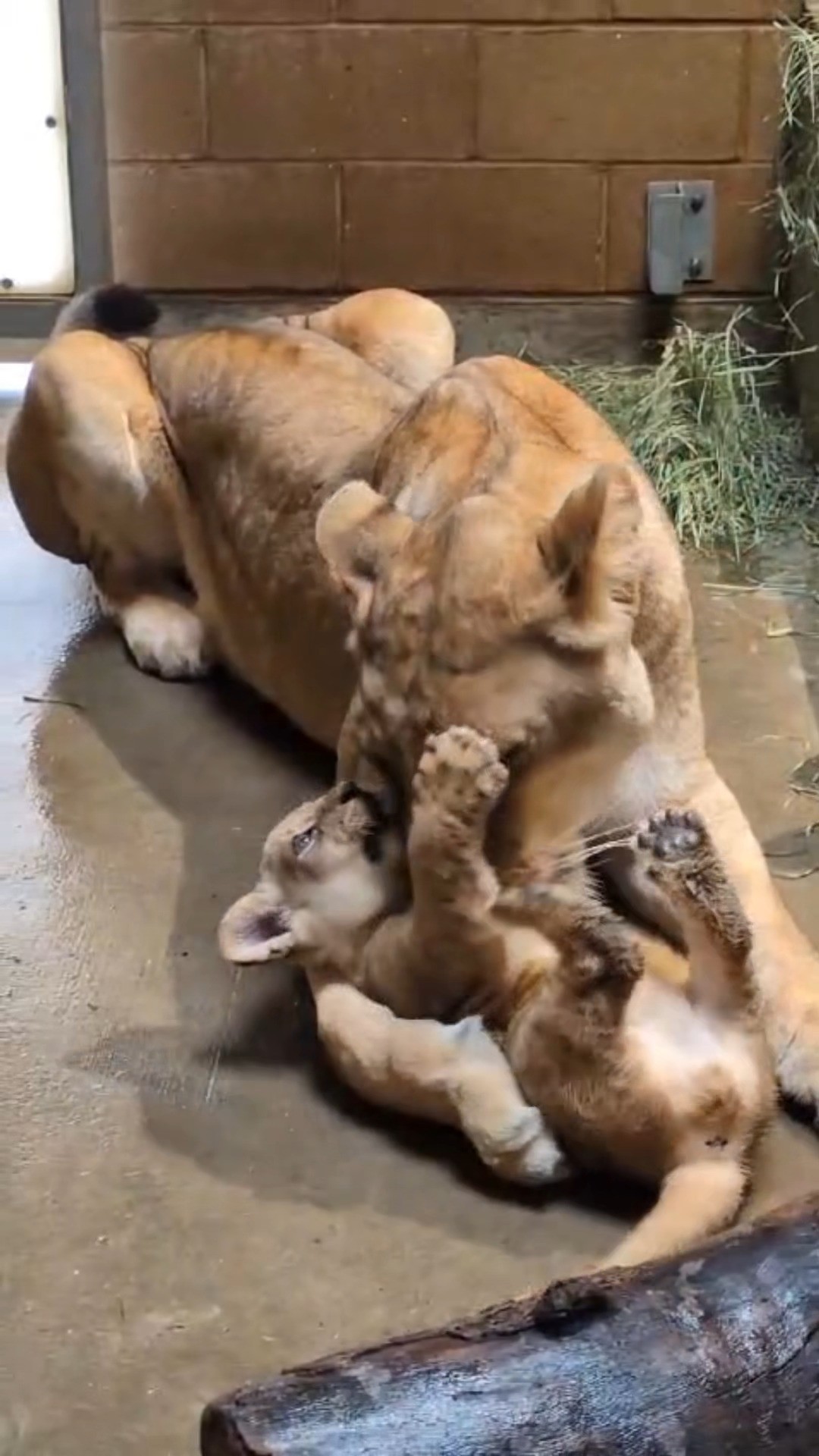- Exploration of maternal behaviors in big cats, using Zamaya as a case study.
- Understanding the roles and challenges of zookeepers in promoting a nurturing environment for wildlife.
- Insights into zoo conservation efforts and their impact on species survival.
- The significance of video and social media in wildlife education and public engagement.
- Highlights on the role of collaboration between zoos and conservation organizations in preserving wildlife.
Zamaya, a renowned big cat mother, displays behaviors that offer valuable insights into maternal care in the animal kingdom. Her gentle interactions with her cubs serve as a vivid example of the innate instincts prevalent in big cats. Mothers in the wild must protect, nurture, and train their offspring, a responsibility brimming with risk yet vital for the continuation of their lineage. Zamaya’s care highlights not only her individual traits but represents broader patterns seen in her species, invoking interest among zoologists and animal behaviorists.
Big cat mothers emphasize the balance between providing safety and encouraging independence. In the early weeks after birth, cubs are blind and utterly reliant on their mothers. During this period, Zamaya keeps her cubs close, ensuring they are warm, fed, and safe. She initiates play activities which are not merely for entertainment; they are critical for the cubs’ motor and hunting skill development. Through playful swats and gentle nips, Zamaya educates the cubs on essential survival skills, crucial for when they eventually leave the maternal side.
Zoo caregivers play an indispensable role in facilitating such natural behaviors within a controlled environment. The staff at Zamaya’s zoo diligently create an atmosphere that mimics the wild, affording her the space and resources to raise her cubs naturally. This careful balance requires the zookeepers to harmonize their interventions with non-intrusive monitoring.
Modern zoos prioritize enrichment programs, where animals like Zamaya are engaged through diverse stimuli mirroring their natural habitats. This minimizes stress and encourages natural behavior, which are essential when nurturing cubs. Providing suitable denning spaces, prey substitutes for hunting practice, or even environmental complexities ensures that a zoo is more than a place of mere exhibition. It becomes a haven where animals thrive and learn in a setting that respects their innate behaviors.
Moreover, zoos today are pivotal in broader conservation efforts, going beyond display functions. Their role in breeding programs is crucial for endangered species, offering a genetic lifeline should wild populations dwindle. Zamaya and her cubs become ambassadors for such programs, bringing attention to the challenges faced by their wild counterparts. Breeding in captivity isn’t an end but a means to bolster wild populations when conditions allow.
The key lies in strategic collaborations between zoos and conservation organizations. Research, exchange programs, and shared databases enable knowledgeable management and support for sustainable populations. Practices gleaned from observing Zamaya and others like her help refine such programs, making reproduction and cub rearing more successful, reducing mortality risks in early development stages.
Such educational endeavors are not confined to professionals alone. With the advent of video sharing on platforms like Instagram, behaviors of animals like Zamaya become accessible to a global audience. Short clips capturing her tender moments with her cubs do more than entertain; they inform and inspire. Social media has transformed how conservation messages are relayed, making them more interactive and engaging. Video content breaks barriers and disseminates knowledge to diverse audiences, spanning age and geography. It inspires an emotional connection with nature, crucial to fostering a conservation ethic.
Furthermore, these platforms empower zoos by broadening their educational outreach. Engaging content, like videos of Zamaya, plays a role in public consciousness and widens the support base for conservation efforts. Audiences who witness the nurturing side of apex predators become advocates, understanding that zoo animals contribute to vital research with real-world implications.
Numerous collaborations underpin these achievements, involving universities, governments, and local communities aiming for a sustainable harmony between human expansion and habitats crucial for wildlife survival. Protecting ecosystems ensures that animals like Zamaya remain part of our planet’s biodiversity tapestry.
Yet, this is a shared responsibility. It reflects our commitment to coexist with the species that walk this earth beside us. Investing in such initiatives ensures future generations inherit a world where cubs can still be doted upon by attentive mothers like Zamaya.
Ultimately, understanding and appreciating a cub’s early life in captivity, seen through the lens of Zamaya, provides a microcosm of the goals and challenges that define zoo roles today. Bridging science and emotion, zoo activities rooted in education and conservation secure futures not only for captive animals but their wild relatives worldwide. By nurturing this interest, alongside responsible strategies and transparent storytelling, we can collectively gesture toward a future that respects and protects our shared natural heritage.
*****
Source Description
Throwback to Zamaya doting on her cubs 🥰 🥺
📹 : ZCS Heidi


